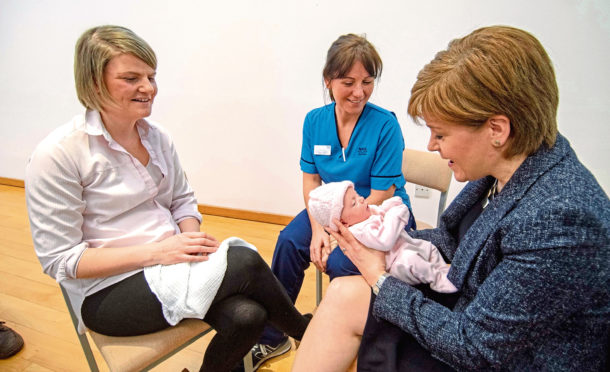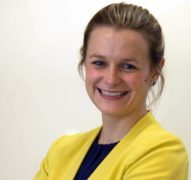My foot hits the brake and we jolt to a halt. Maya starts to cry and I get that horrible sinking feeling in the pit of my stomach as I realise the other car has gone into her door.
Thankfully, I quickly establish she’s fine – as are the rest of us – and the driver admits straightaway he was at fault.
He didn’t check his blind spot before pulling out, he tells me apologetically, looking genuinely distraught at what has happened.
But even though I know there’s nothing I could have done, I still feel dreadful.
One of my biggest fears since my daughter was born, the experience has left me a nervous wreck – and not just behind the wheel either, more generally too.
I’ve also been feeling thoroughly demoralised, perhaps because the accident has reminded me how much of what life throws at us is outwith our control.
I was prone to this kind of melancholic introspection in the early months of parenthood. And for a while, I became unhealthily preoccupied with all the bad things that could happen to Maya, with the harsh truth that doing my best to protect my child might not be enough.
At the time, I tried not to think much of it, putting it down to “hormones”.
But reading this week that up to one in five women is affected by mental illness during pregnancy and the first year after birth – some 11,000 annually – has made me sit up and take notice.
Because that means we all probably know someone who’s suffering and have a duty to be on the lookout for the signs.
The statistic, which First Minister Nicola Sturgeon highlighted as she unveiled a £50 million investment in perinatal mental health services, has also brought home how crucial it is to talk about these issues openly.
With the benefit of hindsight, my intermittently gloomy mood – and that’s all I’ll call it – can be easily explained by the difficult start we had.
After four days in labour, our daughter ended up in the special care unit due to meconium aspiration during delivery.
As a result, I only got to hold her for a matter of seconds before she was whisked away.
>> Keep up to date with the latest news with The P&J newsletter
Then all I could do was lay back, exhausted, and listen as the dozen-strong team worked to clear her lungs before moving her to the incubator.
Separated for the first few days, I was utterly miserable on the ward, especially outside visiting hours when I had to contend with the long nights alone.
My frame of mind improved when she joined me, but it quickly deteriorated again as it hit me she was no longer in the safe hands of the heroic specialist nurses who had looked after her so well, but my own.
I continued to struggle for a while after we got home, particularly when Mr R went back to work, and still don’t think I’ve really dealt with the trauma of the birth. So much so that if we have another baby, as we hope to at some point, I’d want to seek counselling first.
Of course, all this came with a copious side helping of guilt too. Delighted to be a mum, I misguidedly believed I should be happy all the time, which, indeed, isn’t possible of even the most upbeat individual.
Fortunately, my eternally supportive family ensured my negativity didn’t consume me.
Without this safety net however– and sadly not everyone has one – it could’ve been a different story. Moreover, my symptoms – if you can even call them that and I’ve no wish to exaggerate – were at the low end of the spectrum.
I can’t even begin to imagine the impact of severe conditions such as post-natal depression.
The Scottish Government’s intervention is therefore most certainly welcome and will be money well spent, hopefully improving access to treatment and enabling the quick identification of problems so they can be dealt with promptly.
But as important is the spotlight the announcement has shone on what is, to some extent, still a taboo subject. I couldn’t tell you how many times I lied that I was “fine” in that initial period when someone asked after me. And in some instances I’m sure the person doing the asking was having a tough time too, but we carried on with the pretence regardless.
People generally don’t want you to bare your soul at every opportunity and, if you do, can sometimes be quick to point out what you are doing wrong, particularly with regards to raising children.
Furthermore, I was always worried people would think I was a bad mum or weak if I admitted finding it hard. As soon as I saw Maya, I felt a rush of love and again when I saw Mr R holding her for the first time.
It has, however, been a more demanding process – both physically and emotionally –than I ever expected. I know I’m a good mum, but I didn’t come ready-made and it took a while to develop this confidence.
With that in mind, if we are to improve perinatal mental health – as well as ensuring help is properly funded where required– we need as a society to be more honest and concede that some aspects of being a mum or dad aren’t instinctive for everyone.
Parenthood doesn’t always come naturally and we must put an end to this myth.

